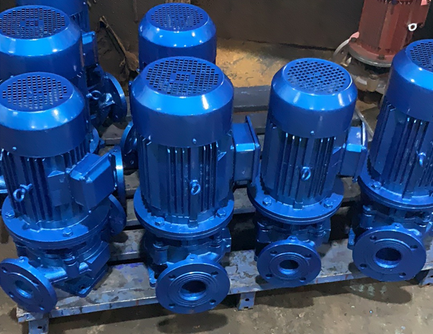Causes and treatment methods of circulating pump tripping
The reasons and treatment methods for the circulation pump tripping involve many aspects. The following is a detailed analysis of these contents:
1. Reasons for the circulation pump tripping
Water inlet problem:
Blockage of the water inlet pipeline: If there is a blockage in the water inlet pipeline, the circulation pump will not be able to absorb water normally, causing it to trip.
Poor water quality: Too many impurities or particles in the water inlet may also affect the normal operation of the pump and cause it to trip.
Exhaust problem:
When the circulating water pump is running, if the discharged gas cannot be discharged in time, the internal pressure of the pump body will increase, thereby affecting the normal operation of the pump and even causing it to trip.
Circuit problem:
Unstable power supply voltage: Fluctuations in the power supply voltage may affect the normal operation of the motor and cause the circulation pump to trip.
Poor wire contact: Loose or poor contact of the wire connector may also cause circuit failure, causing the circulation pump to fail to work properly.
Equipment failure:
Motor failure: Motor damage, bearing overheating or motor phase deficiency may cause the circulation pump to trip.
Pump body failure: Damage to the impeller inside the pump body, bearing wear or seal failure may also affect the normal operation of the pump.
Improper operation:
If the operator fails to follow the operating procedures when starting or stopping the circulating water pump, the pump may also stop.
External environmental influence:
If the ambient temperature is too high or the humidity is too high, it may also affect the normal operation of the circulating water pump and cause it to stop.
2. How to deal with the stopping of the circulating pump
Check the water inlet system:
Clear the blockage in the water inlet pipe to ensure smooth water inlet.
Check the water quality and treat the water quality if necessary.
Perform exhaust treatment:
Before starting the circulating water pump, perform sufficient exhaust treatment to ensure that there is no gas accumulation inside the pump body.
Check the circuit system:
Check whether the power supply voltage is stable and whether the wire connector is in good contact.
If a circuit fault is found, contact the electrician in time for processing.
Check equipment fault:
Regularly check the operating status of the motor, pump body and other equipment, and repair or replace them in time if a fault is found.
Pay attention to the lubrication and cooling of the bearings to prevent overheating damage.
Standard operation:
The operator should strictly follow the operating procedures to start, run and stop the circulating water pump.
When performing equipment maintenance or overhaul, the power supply should be cut off and a warning sign should be hung.
Improve the external environment:
If the ambient temperature is too high, cooling measures can be taken; if the humidity is too high, ventilation and dehumidification can be strengthened.
Emergency treatment:
After the circulating water pump stops, the outlet valve should be closed immediately (to prevent the circulating water from circulating in front of the pump) and check whether the standby pump has power. If there is power, the standby pump should be started immediately to maintain the normal operation of the system.

At the same time, the cause of the stop should be quickly identified and measures should be taken to deal with it to prevent the accident from expanding or recurring.




